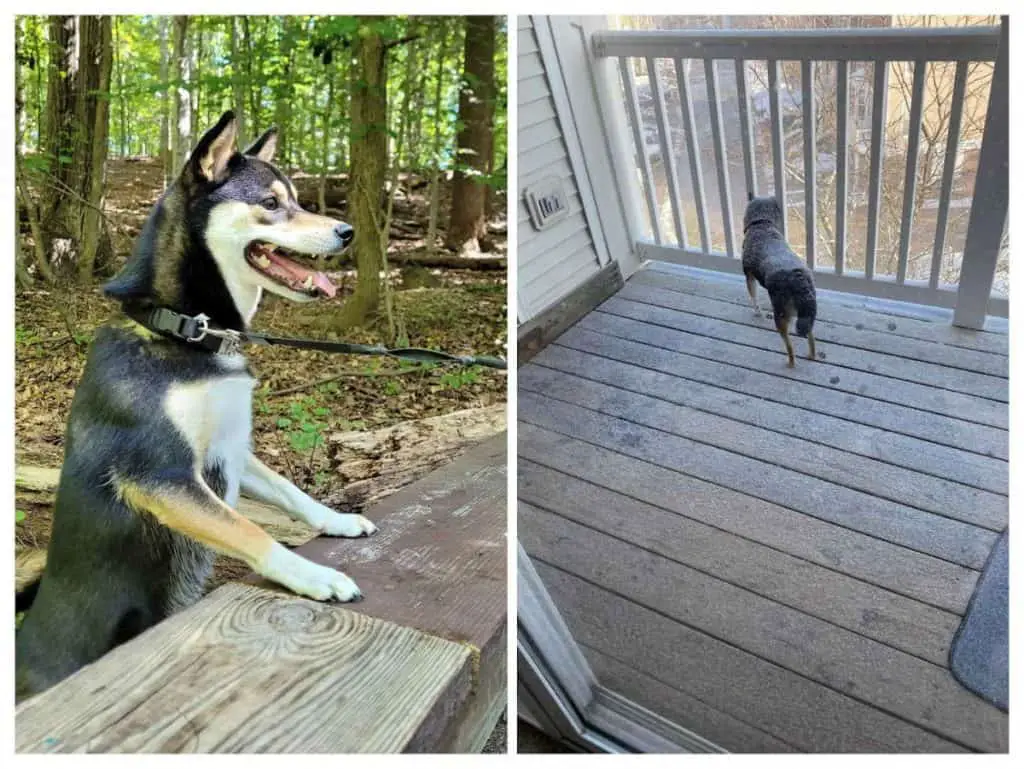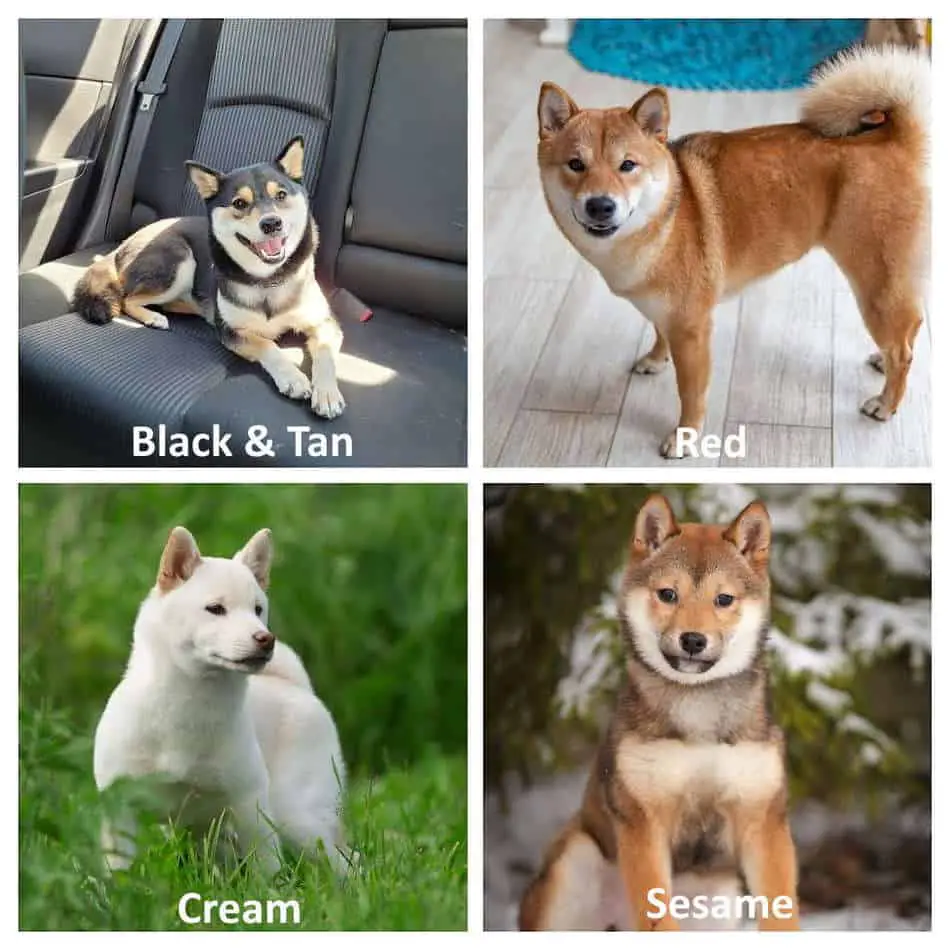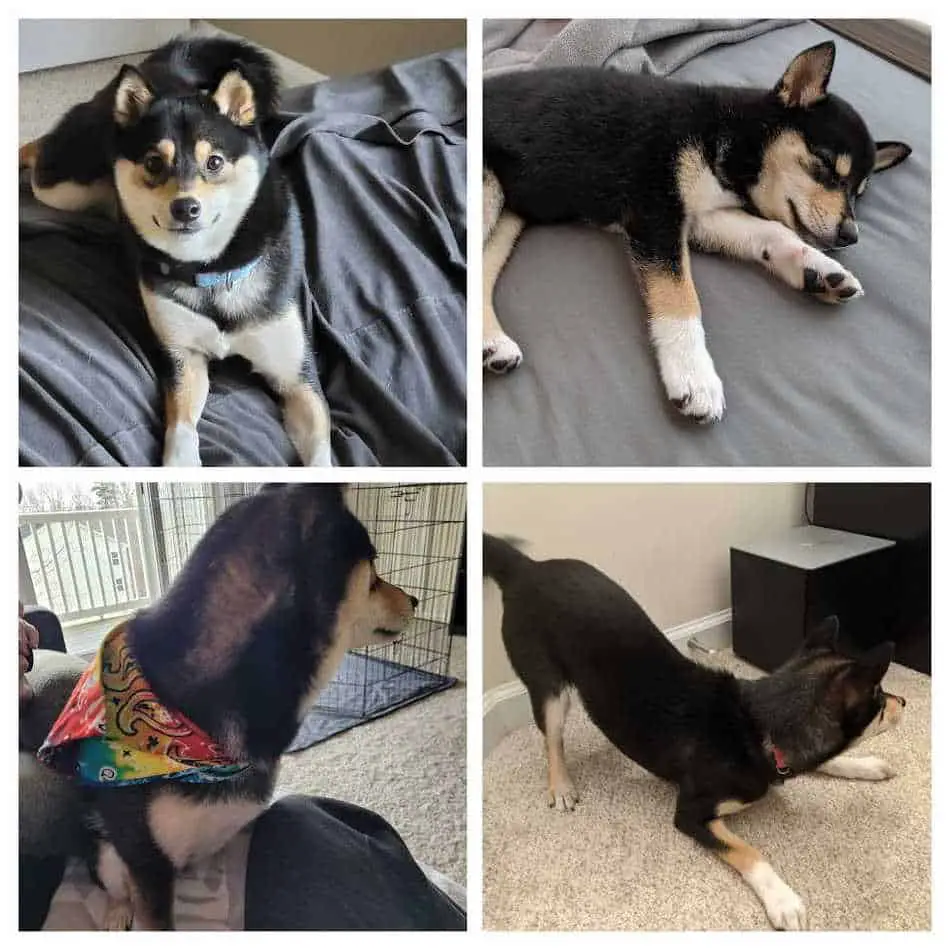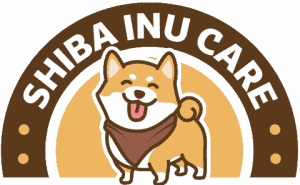This post contains affiliate links.
Shiba Inus have two coats, over and under, that do a lot to help them year-round. The biggest downsize is the amount of fur they seemingly never stop shedding.
Shiba Inus have a thick double coat that sheds moderately throughout the year and heavily twice a year. Their outer overcoat is stiff, straight, and helps keep them clean by repelling dirt and water but doesn’t regrow when cut. Their undercoat is thick, soft, and constantly replaced.

Knowing they shed to prepare for the summer and winter months is nice, but why can’t I just shave them if it’s such a hassle? Read more to learn why in detail.
The Reason Shiba Inus Have A Double Coat
Shiba Inus are an ancient hunting dog from Japan. The reason for two coats was to combat the swings between hot humid summers and fridged icy winters. But both seasons and types of weather are polar opposite to each other, which is where “blowing” their coat comes in.
Most Shiba Inus start heavily shedding, “blowing their coat”, during the first 3 weeks of spring and the first 3 weeks of fall. The reason for this is they have different needs in the summer and winter months:
Summers are generally warmer, so as a dual-coat dog the Shiba Inu would want as light of an undercoat as possible to help stay cool and comfortable. Shedding their thicker winter coat to regrow a lighter one meets that goal. But that won’t be enough for all hot weather.
Winter months are usually colder, so a thinker undercoat helps regulate body heat and keep a Shiba Inu warm. Blowing their light summer coat in favor of a newer thicker winter coat is preferred. Thanks to that Shiba Inus don’t need to wear an additional layer or doggy coat during the cold winter months.
This difference between summer and winter coats also plays a role in how fluffy a Shiba Inu is. Since summer coats are thinner and lighter, these do look more slim and streamlined. While the thicker winter coats puff them up and make Shiba Inus look like teddy bears.
It’s best to brush them at least once a week, if not a few times a week, during this time to help them with the shedding process. This also gets you ahead of the mess in hopes you can keep the spread of loose fur to a minimum.
It’s not uncommon to end up with another dog’s worth of fur, so be prepared. It’s best to get them used to being brushed and handled from a young age because this is a lifelong cycle for them. There is no way to stop or prevent the shedding from happening.
Some dog breeds do fine with a quick haircut, but that would be a massive mistake for a Shiba Inu. While a Shiba’s undercoat will grow back just fine their overcoat will not. Shaving a Shiba Inu’s overcoat permanently ruins it for the rest of their life. And since they rely on it so heavily to not only protect them but also help keep them dry and clean, their life will become rather difficult immediately.
The 4 Core Shiba Inus Colors

Red – Is the most common Shiba Inu people know and have seen. Some call it the “ambassador” of the breed.
Cream – Pure cream, or snow-white, is one of the more commonly desired coats. This is the lightest fur color Shiba Inus comes in.
Black & Tan – Also called “tri-color”, this is the darkest fur color Shiba Inus comes in. While they are fine in the sun during the summer months, due to their back and heads being primarily black, you need to make sure they have access to clean water and shade so they don’t overheat.
Sesame – The rarest and most difficult to define color Shiba Inus come in. Due to its rare nature, it’s common for people to seek these colorful pups out over the other options. Sesame is the most misdefined of the colors due to its stringent requirements.
- They must have a red base coat.
- Their hair must be less than 50% black with an even overlay.
- The black fur must be an even overlay, with no solid patches.
- Their pattern resembles the Black & Tan with the blank spots covered by the black overlay.
- They also can’t have a black mask, primarily a Black & Tan facial pattern.
As A Shiba Inu Grows Their Color Palette May Shift
It’s not uncommon for a Shiba Inu puppy’s color to shift and change as they grow and develop. You won’t see anything drastic as a cream Shiba turning into a red one, but do be aware that they may not look the same as an adult as they do as a puppy.
For example. My Shiba Inu, Faith, was very dark and had very little white on her. As she grew up the black on the back started to lighten up with touches of red, especially on the back of her head and neck, and the white on her legs and chest started sticking out more.

Frequently Asked Questions
Are Shiba Inus Single Or Double Coated?
Shiba Inus have a double coat, which means they have two layers of fur. The outer coat, known as the guard hairs, is coarser and offers protection against the elements. The inner coat, or the undercoat, is soft and provides insulation to keep your Shiba Inu warm during cold weather.
Do Shiba Inus Have An Undercoat?
Shiba Inus have an undercoat. This dense, soft layer serves as insulation for your dog, helping them regulate their body temperature. It also helps with shedding, as your Shiba Inu will lose much of their undercoat during shedding seasons, typically in spring and autumn.
What Type Of Coat Do Shiba Inus Have?
Shiba Inus have a double coat that is dense, coarse, and waterproof. The guard hairs are straight and stiff, while the undercoat remains soft and fluffy. This type of coat allows Shiba Inus to withstand various weather conditions and provides protection from dirt and debris.
Is It Okay To Shave Shiba Inu?
It’s not recommended to shave a Shiba Inu. Shaving can damage their coat, disrupt their natural shedding process, and affect their ability to regulate body temperature. Instead, focus on regular grooming to maintain their coat, and only trim areas around their paws and ears if necessary for hygiene purposes.
What Is The Rarest Color Shiba Inu?
The rarest Shiba Inu color is cream, also known as “white” or “uki goma.” Cream Shiba Inus are born with a white coat because of a unique gene mutation. This color is less common and is not recognized by some breed standard organizations, so it is considered to be the rarest color in Shiba Inus.
